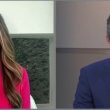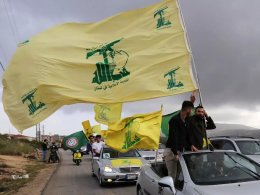1. Strengthening American Allies
Following the creation of the Islamic Republic and the Revolutionary Guards Corps (IRGC), the ayatollahs sought to spread their revolution throughout the Middle East and sow chaos. IRGC Quds Force General Qasem Soleimani was one of the regime's main agents for such a mission and engaged in propping up and supporting radical Islamic groups against Israel and key Persian Gulf Arab allies like Hamas and Palestinian Islamic Jihad in the Gaza Strip, Hezbollah in Southern Lebanon, the Houthis in Yemen, and various Iraqi Shiite terrorist groups in Iraq. Since his death, Israel and its Arab allies have been able to sleep peacefully at night, knowing that a key terrorist figure and supporter cannot continue to lobby for their destruction. The death of Soleimani has also highlighted the importance of a strong relationship between America and Saudi Arabia, given that Soleimani was responsible for many attacks against Saudi Arabian oil shipments and attempted to overthrow the Saudi government.
2. Weakening Islamic Terror
Throughout the Middle East, the death of Soleimani stoked fear not only in the Islamic Republic but also in leadership from other radical Islamic terrorists in the region. After the September 11 attacks from the Islamic terrorist group Al Qaeda, the United States began a campaign to win against such a threat, vowing to stop regimes, individuals, or entities supporting terrorism. The death of Soleimani showed Islamic terrorist leaders everywhere that America could find and target them anywhere in the world, leading many to question their safety and security. Even though Iran continues to support terrorist groups throughout the Middle East, the strike against Soleimani demonstrated that America has not given up on the war on terror and will continue to fight. While the Islamic Republic of Iran and groups like Hamas, Hezbollah, and Al Qaeda have tried to strengthen themselves these past months, the death of Soleimani showed that America still views Islamic terrorism as a fundamental threat in the Middle East and will not stand by as it grows.
3. Blow to the Islamic Republic and IRGC
After the death of Soleimani, members of the Islamic Republic, ranging from Iranian Supreme Leader Ayatollah Ali Khamenei to radical hardline supporters of the regime, were devastated by the loss of their pivotal player. Since then, the morale in the IRGC and the Islamic Republic has waned, with government officials and generals in the corps fearing they might end up like the deceased Islamic general. Even with the Quds force having new leadership under Brigadier General Esmail Qaani, the military training and strategy that Soleimani had in the terrorist entity are now gone, leaving the military branch in a precarious state. While Khamenei has vowed revenge for the death of Soleimani, his death has struck a devastating blow inside Iran, with ordinary Iranians seeing the regime fearful for its stability for the first time.
4. American Strength
Before American forces took out the Quds Force general, the Islamic Republic of Iran targeted American personnel in Iraq and other parts of the Middle East, destroying Saudi oil shipments in the Persian Gulf and using its proxies to attack Israel. For a while, Iran and its proxies viewed America as weak and continued its aggression for several months until the Trump administration acted. The decision to take out Soleimani sent a message to the ayatollahs in Tehran that the U.S. would not stand for the Islamic Republic and its terrorist actions, striking a devastating blow to the regime and its radical Islamic hardliners. Following the death of Soleimani, the government in Tehran has watched its activities in the Middle East, fearing America's military power and other potential strikes against other key regime figures. The death of Soleimani also sent a message to anti-American regimes that the U.S. will not hesitate to use necessary force to stop terror and aggression against American interests and allies.
5. Boost Iranian Protests
In the aftermath of Soleimani's death, ordinary Iranians, Iraqis, and other groups throughout the Middle East cheered on the streets for the General's death, given his history of spreading terror and death throughout the Middle East. While small protests occurred throughout Iran before 2020, the loss of Soleimani inspired young and old Iranians to protest against the regime and see the Islamic Republic as weak. On the anniversary of his death, Iranian protesters who have been protesting on the streets burned large posters and small photos of Soleimani, praising his death and downfall. While the regime has deployed security forces to crack down against protesters in Iran, the inability for protests to be quickly put down like the 2009 Green Revolution is thanks to the death of Soleimani. After he died in 2020, ordinary Iraqis also took to the streets to praise his death, thanking the U.S. for taking out a brutal mastermind who has spread terror throughout the Middle East.
Related Story: 5 of the Most Brutal Members of the Islamic Republic’s Military and Security Forces










